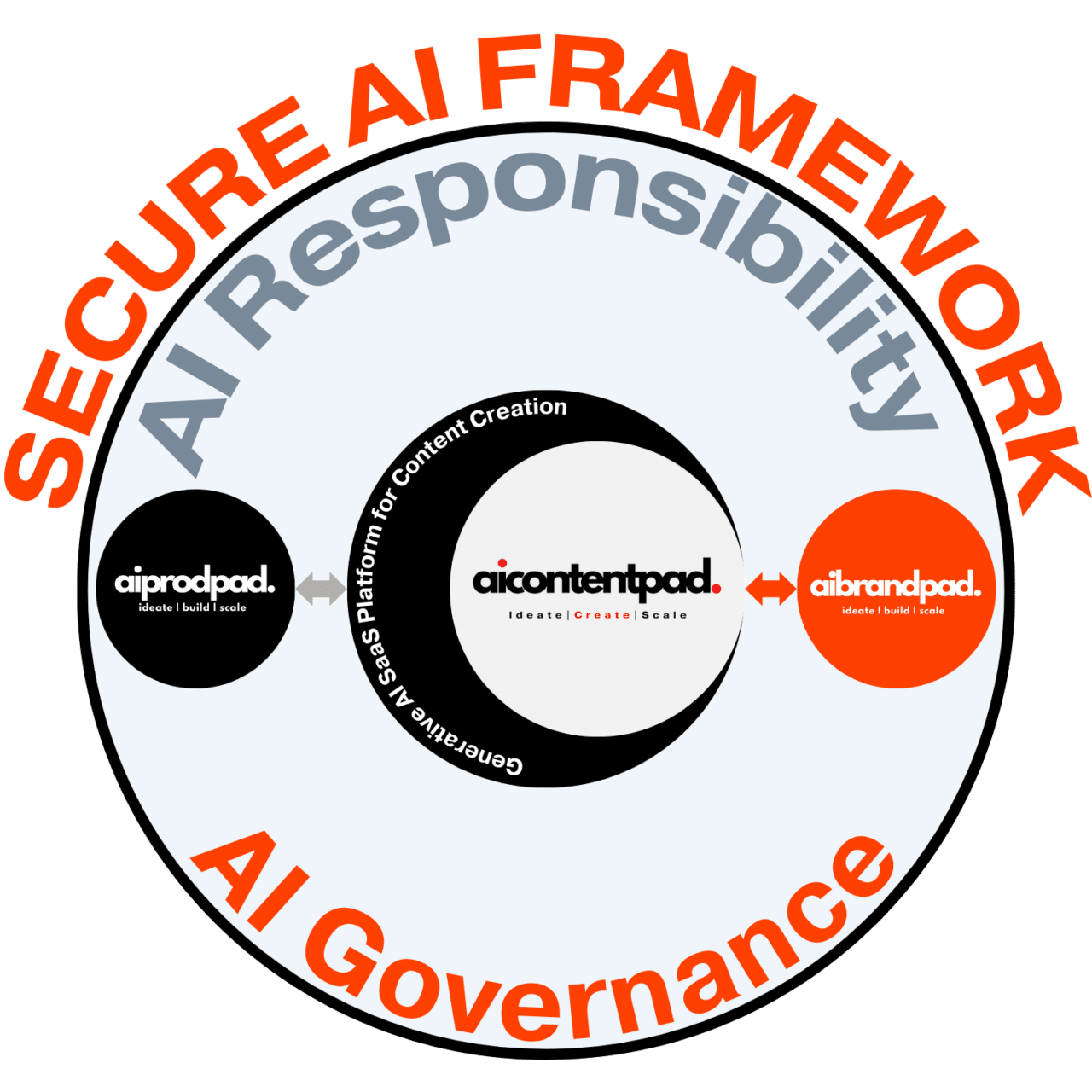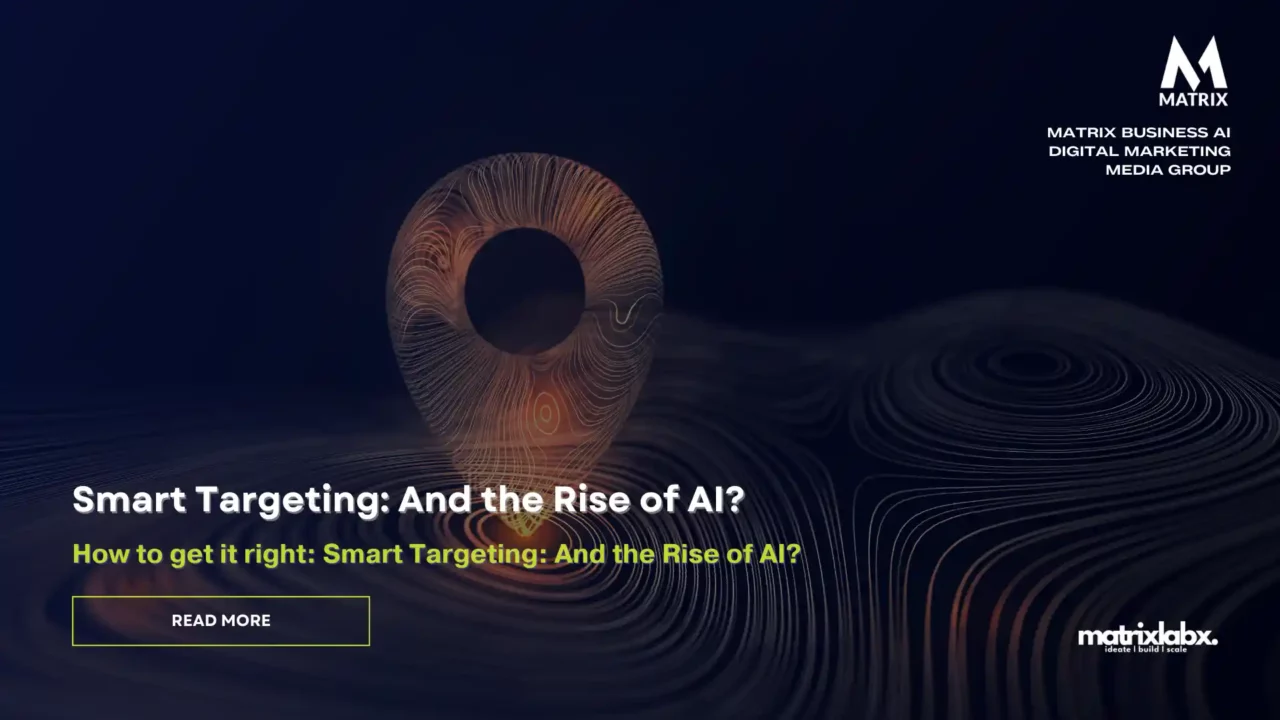How to Use Smart Targeting And the Rise of AI
Smart targeting is a marketing application of artificial intelligence to predict the preferences and habits of internet users.
Artificial intelligence uses previous user actions to decide how to display content best. The more information collected on a user, the more personalized the experience.
Targeting allows marketers to better identify their customer’s needs by leveraging data-driven insights that drive increased conversion rates and ROI for advertisers.
This advertising method has become an essential tool in today’s digital world. Businesses often struggle to make themselves heard above all other advertisements, vying for consumer attention.
Intelligent targeting is about providing targeted ads that are more relevant to users.
Smart Targeting allows advertisers to focus their efforts on the most effective demographic segments with reduced costs per click, increasing conversion rates, and ROI.
In today’s hyper-competitive business environment, AI Smart Targeting has emerged as the linchpin of marketing strategies, a tool that companies are rapidly embracing. Why this surge towards AI-driven precision in targeting? The answer lies in the unparalleled efficiency and effectiveness that AI brings to the table. By leveraging AI Smart Targeting, companies can dissect vast datasets, discerning intricate patterns and preferences of their audience. This newfound capability to pinpoint target markets is not just a marketing advancement; it’s a paradigm shift. What is an Advertising Company? Sales Growth
Interest in AI Smart Targeting stems from its ability to transform vast amounts of data into actionable insights. This allows businesses to tailor their offerings with incredible specificity. This precision increases engagement rates, fostering a deeper connection between brands and consumers.

The desire for AI Smart Targeting is further fueled by its promise to elevate ROI, streamline marketing efforts, and deliver personalized customer experiences, which were once a figment of a marketer’s imagination.
The urge for action becomes clear as we delve deeper into why and what companies use AI Smart Targeting. This article aims to explore the intricacies of AI in marketing, shedding light on how businesses, both large and small, harness AI’s power to revolutionize their marketing strategies and, in turn, redefine the landscape of customer engagement.
What is Smart Targeting?

Smart Targeting is a marketing application of artificial intelligence to predict the preferences and habits of internet users. Intelligent targeting uses previous user actions and data to best display content.
The more information collected on a user, the more personalized the experience.
Smart Targeting allows marketers to better identify their customers’ needs by leveraging data-driven insights that drive increased conversion rates and ROI for advertisers.
Smart Targeting is about providing targeted ads that are more relevant to users. Intelligent Targeting allows advertisers to focus on the most effective demographic segments with reduced costs per click and more sales.
How does smart targeting work?

The technology operates like this: an algorithm based on machine learning tracks visitor data such as location and page time.
The app also tracks behavioral metrics such as the number of site visits, time spent on site visits, and viewable data on VDP.
The system uses accumulated visitor profiles to create segmented visitors, such as early shoppers in a particular place and so on, and predicts the interests of each segment. Is there any way to find out why people did something?
It is used from these statistics again to decide the potential outcomes of its segmentation and predictions. Targeting is a system that behaves like an excellent salesperson responding to and anticipating customers’ queries.
Demographic segmentation with AI
One of the many benefits of Intelligent Targeting is demographic segmentation.
Targeting allows advertisers to focus on the most effective demographic segments with reduced costs per click.
Intelligent Targeting can be applied to B2C and B2B advertising, paid media, search engine marketing, display ads, and social media marketing.
Why Demographic Segmentation with AI is Crucial for CMOs
As a Chief Marketing Officer (CMO), reaching the right audience with the right message is everything. But in today’s hyper-personalized world, traditional demographic segmentation no longer cuts it. This is where Artificial Intelligence (AI) comes in, revolutionizing how we target and engage customers.
Here’s why demographic segmentation with AI is crucial for CMOs:
1. Beyond the Basics: AI digs deeper than basic demographics like age, gender, and location. It analyzes vast data, including online behavior, purchase history, social media engagement, and sentiment, to create detailed and nuanced customer profiles. This allows us to move beyond broad categories and identify specific sub-segments within demographics, ensuring messages are hyper-relevant and resonate deeper.
2. Predictive Power: AI doesn’t just tell you who your customers are; it predicts who they will be. AI can predict future purchases, churn risk, and potential new customer segments by analyzing past behavior and identifying patterns. This gives you the foresight to tailor marketing campaigns and proactively engage customers before they take action, maximizing your ROI.
3. Dynamic Optimization: AI continuously learns and adapts. As customer behavior evolves and new data emerges, your segmentation models automatically adjust, ensuring your targeting remains accurate and effective. This eliminates manual intervention and guarantees you’re always reaching the right people at the right time.
4. Personalization at Scale: With AI, personalization isn’t just a buzzword; it’s a reality. AI can personalize every touchpoint, from website content and email offers to social media ads and product recommendations. This creates individual customer experiences that foster loyalty and drive conversions, far exceeding the capabilities of traditional segmentation.
5. Data-Driven Decisions: AI removes the guesswork from marketing. By providing clear insights into customer behavior and preferences, AI empowers you to make data-driven decisions about your marketing strategy. From allocating budgets to choosing the right channels and optimizing campaigns, AI ensures you always base your decisions on objective evidence, not gut instinct.
In essence, demographic segmentation with AI is the ultimate game-changer for CMOs. It’s not just about reaching the right people; it’s about understanding them deeper, predicting their needs, and delivering personalized experiences that resonate. This translates to increased engagement, higher conversions, and a stronger bottom line. So, embracing AI is no longer optional; it’s a strategic imperative for any CMO who wants to stay ahead of the curve.
Dynamic prospecting

Dynamic prospecting gives you maximum flexibility in using Dynamic Remarketing, which uses feeds and mobile devices to reach new customers.
Unlike static remarketing, it focuses on growing value from your existing customers. Dynamic prospecting uses it to get new users.
This difference makes dynamic prospecting the best if you are a new advertiser or targeting an audience differently than your first-party data (including your remarketing lists).

ChatGPT is revolutionizing the way we work, learn, and communicate.
But what does this mean for those who aren’t using it?
ChatGPT: The AI Divide: Will It Leave You Behind? explores the potential impact of AI on society and asks the question: Are we creating a two-tiered world where those who have access to AI thrive, while those who don’t are left behind?
How automatic targeting works
These automation campaigns leverage performance data to convert aggressively. Intelligent Display Campaign combines two marketing methods. Automated replaying to visit your site.
Automatic targeting excels in catching customers “mid-funnel”—that is, much earlier during the buying cycle. Tell me the price of sparkling water.
Ordinarily, you might not have considered introducing office supplies as a Target for your sparkling water campaign. If your current campaign doesn’t use remarketing, please don’t worry.
When you have multiple campaigns serving advertisements to the same audience, we always use the most relevant advertisement. Learn everything about automated tracking.
How HubSpot uses Smart Targeting
HubSpot Smart Targeting allows advertisers to focus on the most effective demographic segments with reduced costs per click.
Rational Targeting allows marketers to better identify their customers’ needs by leveraging data-driven insights that increase conversion rates and ROI for advertisers.
Salesforce’s behavioral-based model and intelligent targeting increase sales conversion throughout the sales pipeline.

Stop Wasting Ads! Get Laser-Targeted Clicks (and Customers)
Tired of ad duds? Get eyeballs on your brand with laser-focused online ads that convert. Click to unleash the power of targeted marketing!

Stop Scrolling, Start Selling: Social Ads That Convert Like Crazy
Get ready to unleash the power of AI-targeted ads that turn likes into leads and leads into SALES.
How Mailchimp uses Smart Targeting
Mailchimp, a company specializing in email marketing, uses Intelligent Targeting in various ways. For example, targeting helps them tailor their messages to the customers.
Sensible targeting also helps Mailchimp reach out to consumers when they are in a buying mood. Intelligent targeting is not a new technique for Mailchimp, but it recently improved and gained more power.
Smart Targeting is now used to find consumer groups likely to buy a product.
Intelligent targeting allows Mailchimp employees and marketers to create campaigns targeting specific audiences, such as those interested in buying high-ticket items, luxury goods, or high-value products like cars.
How Salesforce Uses Smart Targeting
Salesforce Smart Targeting allows advertisers to focus on the most effective demographic segments with reduced costs per click.
Rational Targeting can be applied to B2C and B2B advertising, paid media, search engine marketing, display ads, and social media marketing.
Sensible Targeting is about providing targeted ads that are more relevant to users.
Smart targeting is not a new technique for Salesforce, but it has been recently improved and gained more power.
Smart targeting allows marketers to better identify their customer’s needs by leveraging data-driven insights that drive increased conversion rates and ROI for advertisers.
How Salesforce Uses Smart Targeting: A Marketing Manager’s Perspective
As a Marketing Manager at Salesforce, I’m constantly innovating to reach the right audience with the right message at the right time. That’s where Smart Targeting comes in – it’s our secret weapon for maximizing the impact of our marketing efforts.
Here’s how we leverage Smart Targeting:
- Understanding the Customer Journey: We don’t just blast generic messages; we map the customer journey and identify key touchpoints. Smart Targeting allows us to tailor messaging based on their stage in the journey, from awareness to consideration to purchase.
- Leveraging Data Silos: Gone are the days of siloed data. Smart Targeting connects various data sources, including website behavior, Salesforce CRM, and marketing automation platforms. This paints a complete picture of each customer, enabling hyper-personalized interactions.
- Predictive Analytics: We don’t just react; we predict. Smart Targeting uses AI to analyze past behavior and identify patterns, predicting which leads will most likely convert. This allows us to prioritize high-potential leads and allocate resources efficiently.
- Dynamic Content and Offers: Our website and marketing materials aren’t static with Smart Targeting. They dynamically adapt based on individual preferences. Imagine landing pages showcasing relevant solutions and personalized offers for each visitor – that’s the power of Smart Targeting.
- Cross-Channel Orchestration: We don’t operate in isolation. Smart Targeting ensures seamless experiences across all channels, from email and social media to webinars and events. Customers receive consistent, personalized messages regardless of their interaction points.
- Real-Time Optimization: We don’t wait for campaign reports. Smart Targeting continuously monitors performance and automatically adjusts targeting parameters based on real-time data. This ensures we always serve the most relevant content and optimize for maximum conversions.
The results? Smart Targeting has been transformative. We’ve seen:
- Increased lead generation: We’ve significantly boosted qualified lead generation by targeting high-intent individuals.
- Improved conversion rates: Personalized content and offers resonate better, leading to higher conversion rates across the funnel.
- Enhanced customer engagement: Tailored interactions foster deeper connections and build brand loyalty.
- Optimized marketing spend: We allocate resources to the most promising segments, maximizing ROI and minimizing wasted efforts.
Smart Targeting isn’t just a tool; it’s a philosophy. It’s about understanding our customers individually and delivering experiences that matter to them. In a world of noise, it’s the key to cutting through and building lasting relationships.
So, if you want to take your marketing to the next level, embrace Smart Targeting. It’s the future of reaching the right audience and driving real business results.
Why Smart Targeting Is Important
Smart Targeting has become an essential tool in today’s digital world, where it is often difficult for businesses to make themselves heard above all other advertisements vying for consumer attention.
Intelligent Targeting allows marketers to better identify their customer’s needs by leveraging data-driven insights that drive increased conversion rates and ROI for advertisers.
Rational Targeting is about providing targeted ads that are more relevant to users.
Intelligent targeting has become an essential tool in today’s digital world, where it is often difficult for businesses to make themselves heard above all other advertisements vying for consumer attention.
Intelligent targeting is not a new technique, but it has been recently improved and gained more power with the help of artificial intelligence, machine learning, neural networks, and big data analytics.
Benefits of Intelligent Tarteging:
- Smart Targeting can be applied to B2C and B2B advertising, paid media, search engine marketing, display ads, and social media marketing.
- Targeting is about providing targeted ads that are more relevant to users.
- Rational Targeting allows marketers to better identify their customers’ needs by leveraging data-driven insights that increase conversion rates and ROI for advertisers.
Summary of Smart Targeting
Smart targeting is a marketing application of artificial intelligence to predict the preferences and habits of internet users.
Artificial intelligence uses previous user actions and data to decide how best to display content based on what is most relevant to individual users.
Intelligent targeting uses demographic segmentation, allowing advertisers to focus efforts on the most effective demographics with reduced costs per click, increasing conversion rates, ROAS, and ROI.
Sensible targeting has become an essential tool in today’s digital world, where it is often difficult for businesses to make themselves heard above all other advertisements.
General FAQs
What is Smart Targeting?
Smart Targeting is an artificial intelligence application for predicting internet users’ preferences and behavioral patterns. Sensible targeting works by noticing previous user actions, which are then used to display more personalized content.
How does Smart Targeting work?
Smart Targeting is an artificial intelligence application marketing tool for digital marketers. Smart targeting works by noticing past user actions, which are then used to display more personalized content. Sensible targeting enhances the browsing experience by conveying similar content to the screen.
What are the benefits of Smart Targeting?
Smart Targeting is a marketing application of artificial intelligence to predict the preferences and habits of internet users. Smart Targeting uses previous user actions to decide how best to display content. Another big benefit Smart Targeting provides is that it enhances your browsing experience because similar content will be shown on the screen whenever you visit a page you’ve already visited.
Who uses Smart targeting in their marketing strategies?
Marketers commonly use smart targeting since it gives them the advantage of capturing leads before competitors. Smart targeting can be considered a form of artificial intelligence because it collects data on how you browse the internet and uses this information to display content appealingly.

